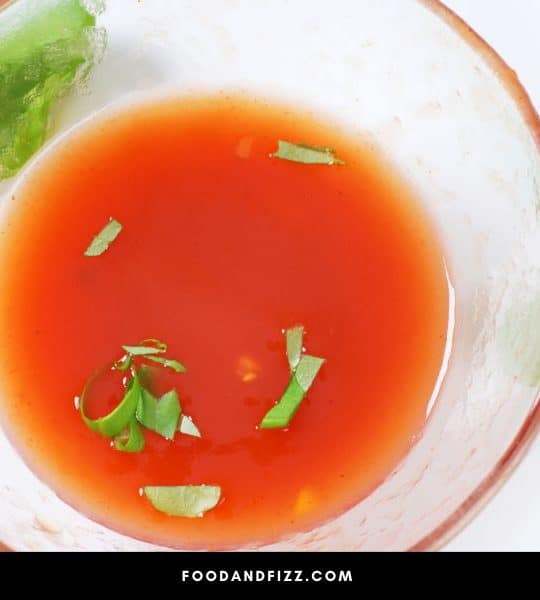The wonderful thing about salads is that, by just changing the dressing, you change your whole eating experience. Even if you use the same salad greens and the same toppings, you can turn it into a completely different dish by just using a different dressing.
Salad dressing comes in many different flavors. Some of the more popular ones include Ranch, Caesar, Italian, Bleu Cheese, French, and Catalina dressing.
Catalina dressing and French dressing, because they look quite similar, are often confused with each other. But is there a difference between them?
What Is The Difference Between Catalina and French Dressing?
The difference between Catalina and French Dressing is that French dressing is more orange and has a creamier consistency and Catalina dressing is more vibrant red in color with a thinner consistency. Catalina dressing is also sweeter due to its higher sugar content. Catalina is a type of French dressing so they naturally look very similar. Both are tomato-based salad dressings with variations in color and flavor.
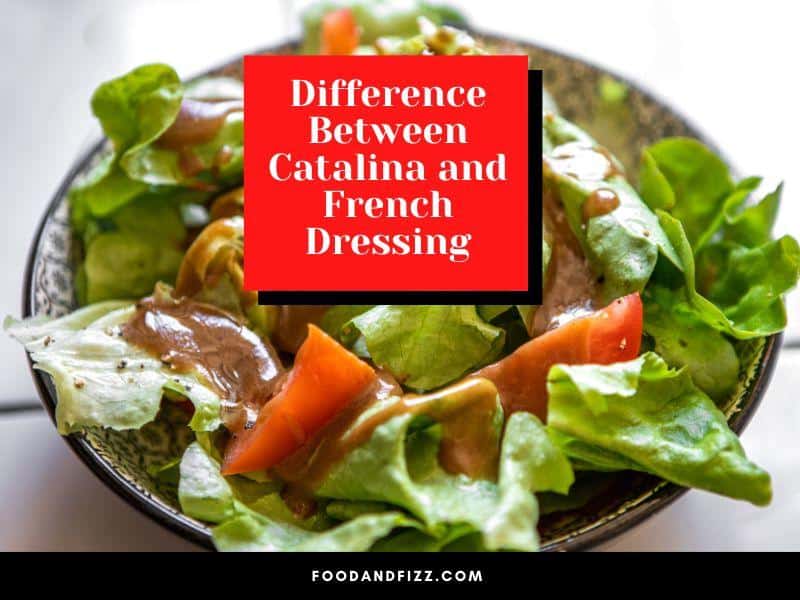
Difference Between Catalina and French Dressing
Catalina dressing and French dressings are very similar in that they both have tomatoes as a base ingredient, which gives them their bright orange to bright red color.
This usually comes in the form of pureed tomatoes, tomato paste, or ketchup. Other ingredients include oil, vinegar, sugar, and spices like paprika, which contributes to the reddish hues of the dressings. Both dressings are sweet and tangy in flavor profile, and both are well-loved family favorites.
But how can you tell them apart? What are the differences between Catalina and French Dressing?
We’ll look at four aspects of comparison below.
1. Color
Catalina dressing has a bolder, vibrant red hue while French dressing has a paler and lighter orange hue.
2. Ingredients
Both Catalina and French dressings have tomatoes as their base and use oil, vinegar, and spices like paprika. However, French dressing can sometimes be made with eggs or mayonnaise, which makes them creamier. Catalina dressing is usually just made with tomatoes or ketchup, oil, vinegar, sugar, and spices.
French dressing was actually regulated by the FDA until recently. It had to be made specifically with a mixture of vegetable oil, acids like vinegar and lemon or lime juice, specific spices, salt, sugar, and tomato paste or puree.
Currently, however, the manufacturer has the choice of what ingredients to use for their products, but the formerly regulated mix of ingredients is what most people have come to know here as French dressing. (Read: Does French Dressing Have Dairy?)
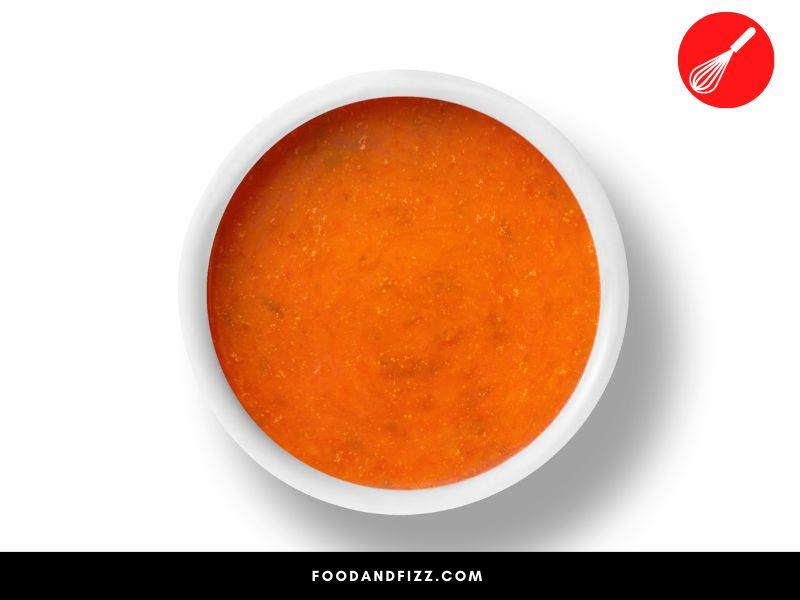
3. Consistency
Catalina dressing tends to be runnier and thinner than French dressings in terms of consistency as they have lesser fat compared to French dressings.
If we compare it with other dressings, French dressing is creamier than Catalina dressing but not as creamy as Russian dressing.
4. Taste and Sugar Content
Catalina dressing and French dressing are both sweet and sour but Catalina dressing tends to be sweeter than French dressing due to its higher sugar content.
Origins of Catalina and French Dressings
Is French Dressing From France?
French dressing, despite the name, is not actually French but an American invention. Traditional French dressing is more of a vinaigrette, which is essentially a ratio of 3 parts oil to 1 part vinegar.
The oil is usually olive oil and vinegar, red or white wine vinegar. Dijon mustard may be added as well as other herbs and spices.
Sometime in the early 1920s, American companies started adding other ingredients like onions and ketchup, and spices to the traditional vinaigrette.
The name was never changed and thus the American-style French dressing was born. It remains to be one of the most well-loved dressings to this day.
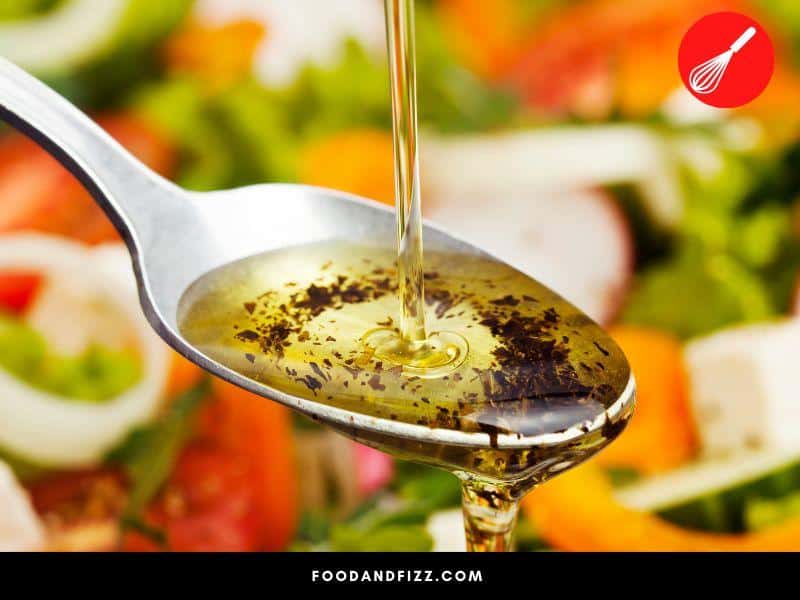
Why Do They Call it Catalina Dressing?
Some people think the name was inspired by a place, maybe Catalina Islands or even Catalonia in Spain, but no one knows for sure.
Most actually believe it was just something that the manufacturer, Kraft, came up with, to distinguish it as a variation of the traditional French dressing.
It’s worked to their advantage either way as both dressings have come to be loved by many.
Types of Salad Dressings
Now that we know the subtle differences between Catalina and French dressing, we can now explore salad dressings as a whole, to get a better understanding of just how rich this world of salad dressings really is.
Salad dressings are a type of mixture, and can generally be grouped into three categories.
1. Vinaigrettes
As we mentioned earlier, traditional vinaigrettes are made with oil and vinegar and herbs and spices, following a ratio of 3 parts oil to 1 part vinegar.
Other ingredients like mustard may be added, as well as seasonings and herbs, and spices. My favorite vinaigrette is a Balsamic vinaigrette made with balsamic vinegar, extra virgin olive oil, Dijon mustard, honey, sugar, salt, and pepper. Simple but to die for!
2. Creamy Dressings
The base for this type of dressing is usually mayonnaise, although sometimes things like buttermilk, yogurt, or sour cream may be used. Dressings made from tahini or creamy nut butters may also fall in this category.
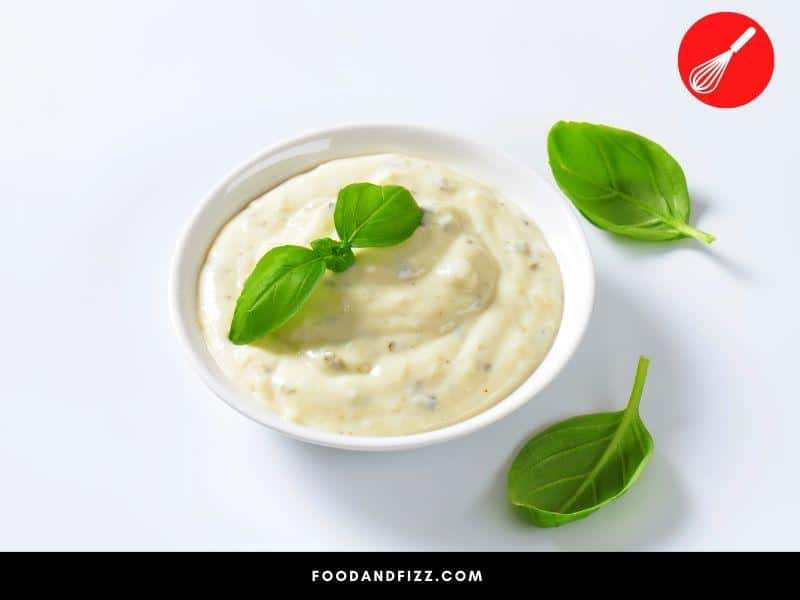
3. Boiled or Cooked Dressings
Boiled dressings were popular in the 1800s to early 1900s when mayonnaise was hard to source and make in the U.S.
Boiled dressing was easier to make from ingredients on hand. It is a creamy dressing made usually from cream or milk, eggs or egg yolks, vinegar, mustard, and flour. Other spices and seasonings may be added.
Other Popular Salad Dressings
Catalina and French dressings are popular, but they aren’t the most popular. In a study done from 2017 to 2018, it was found that the most popular dressing in America is Ranch dressing, followed by Italian dressing, Bleu Cheese dressing, Thousand Island and Caesar.
We’ll explore what those dressings are below.
Ranch
A creamy dressing made with buttermilk or sour cream, mixed with dill, chives or parsley, or other herbs, mixed with onion and garlic and other spices. It has been America’s favorite dressing since 1992.
Italian
In the same way that French dressing as we know it did not come from France, Italian dressing as we know it also did not come from Italy and is very much an American invention.
Italian dressing is a vinaigrette made with extra virgin olive oil, vinegar or lemon juice, basil, oregano, and garlic. According to some people, it gets its name from the herbs mainly used in Italian cooking.
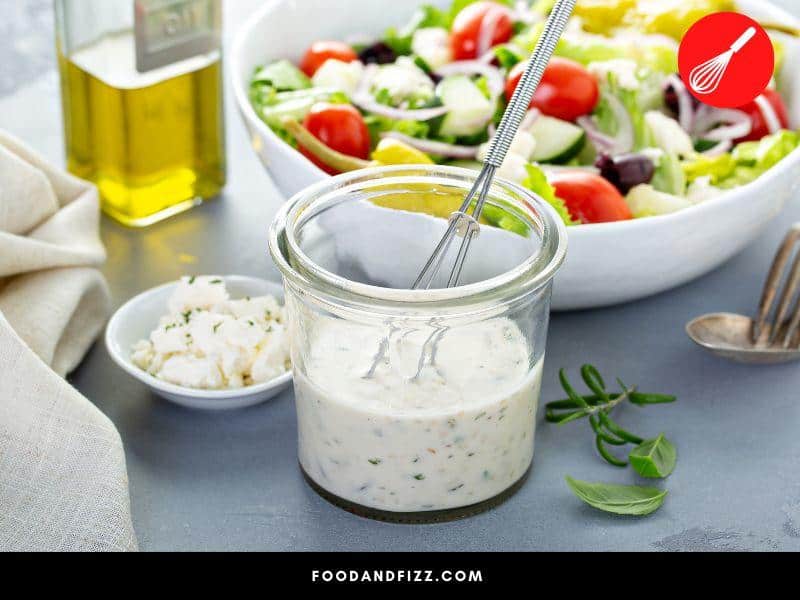
Bleu Cheese
This dressing is made with bleu cheese and a mixture of ingredients like buttermilk, sour cream or yogurt, mayonnaise, vinegar, onion, and garlic. It is a popular salad dressing but also a popular side sauce for vegetables and Buffalo wings.
Thousand Island
A rich, creamy dressing typically made with mayonnaise and ketchup, plus other spices and seasonings. It gets its name from the Thousand Island region, a group of islands between the U.S. and Canada.
Caesar
The origins of Caesar salad are traced back to an Italian immigrant by the name of Caesar Cardini, who is a chef and restauranteur. He actually invented Caesar salad in Tijuana, Mexico.
Caesar dressing typically consists of extra virgin olive oil, egg yolks, lemon juice, garlic, Worcestershire sauce, and anchovies.
Those are just five of the most well-loved salad dressings in the U.S. There are many other different types of dressings and flavor combinations out there, thanks to a lot of curious and inventive cooks, who make it their mission to take our salad eating experience to a whole new level.
Frequently Asked Questions to Difference Between Catalina and French Dressing
Can I Substitute French Dressing for Catalina?
French dressing can be substituted for Catalina dressing as it has a similar flavor profile. You will notice though, that it will be creamier, paler in color, will be less sweet, and will be thicker in consistency than Catalina dressing.
What is the Difference Between French Dressing and Thousand Island Dressing?
French dressing can also have mayonnaise as an ingredient like Thousand Island dressing, but it is not as rich and as creamy as Thousand Island dressing.
Conclusion to Difference Between Catalina and French Dressing
Catalina dressing and French dressing are part of the same family of salad dressings but have notable differences in flavor, consistency, texture, and appearance. Both are popular salad dressings in the U.S., and both have their own loyal followings.

